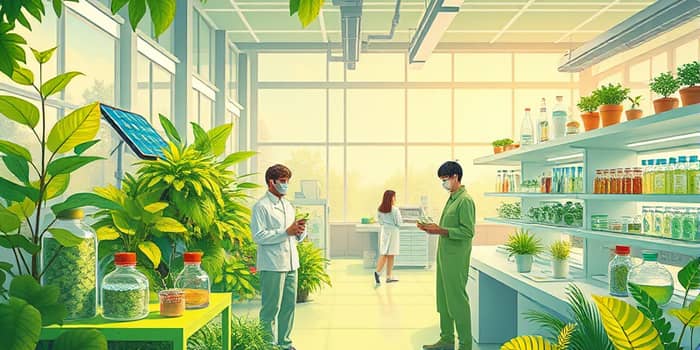
In an era defined by mounting environmental challenges and shifting consumer preferences, green chemistry emerges as a cornerstone of innovation and profitability. Companies worldwide are harnessing the power of sustainable materials to generate robust financial returns while contributing to a healthier planet.
The global green chemicals market is poised for remarkable expansion. Current estimates for 2025 range between USD 13.2 billion and 122.63 billion, reflecting varying classification scopes across research. By 2033–2034, projections climb to USD 25.9 billion–309.6 billion, representing a compound annual growth rate (CAGR) of 7.8–10.8%.
Meanwhile, the sustainable materials segment—encompassing biopolymers, green solvents, and bio-based resins—is already valued at approximately USD 357.18 billion–375.38 billion in 2025. Forecasts suggest this sector will near USD 800 billion–1,078.35 billion by 2032–2034, driven by construction, automotive, packaging, and industrial adoption.
Several intersecting forces are accelerating green chemistry’s ascent. Regulatory pressure from frameworks like the EU Green Deal and REACH creates a mandate for cleaner inputs. In parallel, consumers are demonstrating a growing willingness to pay premiums for eco-friendly products.
Across sectors and regions, green chemistry adoption reveals distinct patterns of growth and opportunity. The following table highlights key segments and market outlooks.
Investing in sustainable materials yields both quantitative and qualitative benefits. Companies adopting greener inputs frequently command enhanced brand loyalty and valuation through superior ESG performance. Many report that eco-friendly product lines achieve higher net margins once initial scale-up costs are absorbed.
Beyond profitability, green chemistry offers compelling risk mitigation. By reducing reliance on volatile fossil feedstocks, firms shield themselves from price shocks and supply-chain disruptions. Furthermore, early movers secure early first-mover market advantage, unlocking access to incentives, partnerships, and premium shelf space.
Operational integration of renewables, waste valorization, and advanced analytics fosters operational efficiency and cost optimization over time. Case studies reveal that biocatalysis platforms can lower energy consumption by up to 30% compared to traditional processes.
Breakthrough technologies and high-profile partnerships are accelerating adoption across industries.
Despite the promise, green chemistry faces hurdles. Production costs for novel materials often exceed conventional options. However, as technologies mature and volumes increase, unit costs are projected to decline dramatically.
Another concern lies in fragmented global standards and inconsistent definitions of sustainability. Harmonization of certifications and cross-border regulations will be critical to scale solutions worldwide.
Looking ahead, synergy between AI, biotechnology, and renewable energy will unlock next-generation materials with tailored properties. Stakeholders who align R&D investments with sustainability goals will lead the transition toward a circular, low-carbon economy.
Ultimately, the convergence of regulation, consumer demand, and technological innovation is catalyzing an era of profitable sustainability. By embracing green chemistry, industry leaders can secure enduring financial returns while safeguarding our planet for future generations.
References





